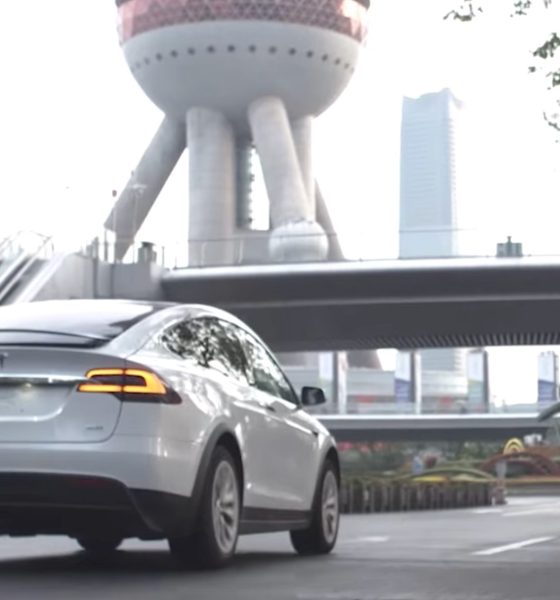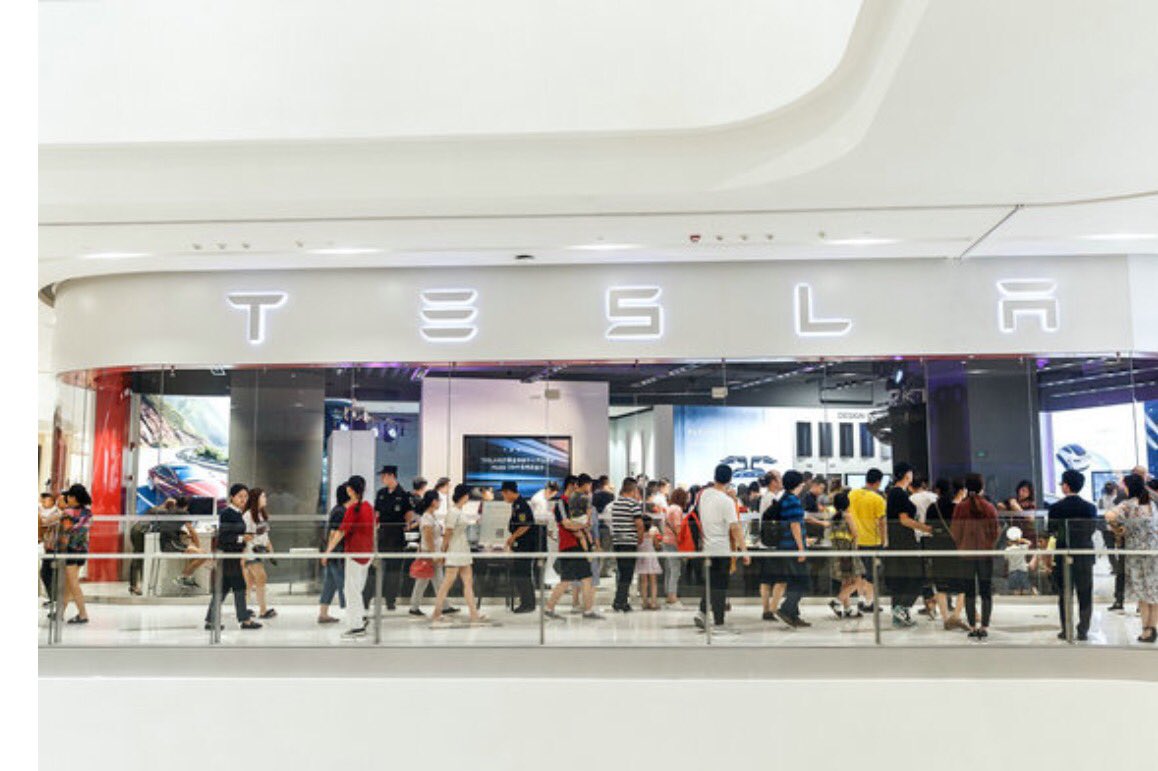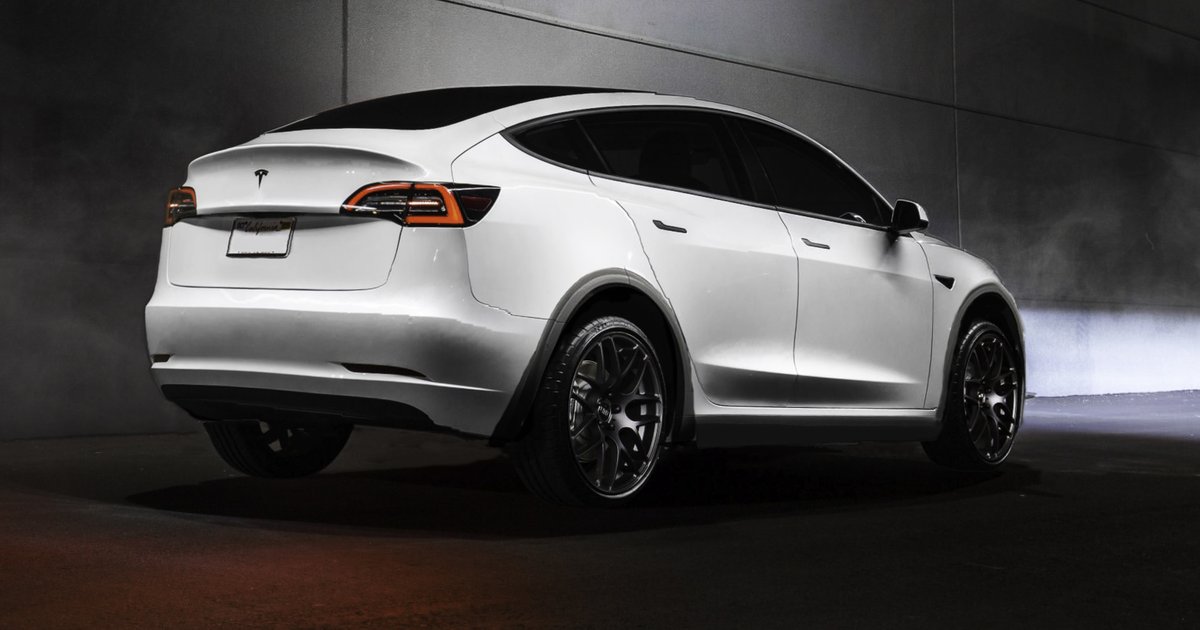

Investor's Corner
Tesla Gigafactory 3 seems to be preparing for the Model Y production ramp
There is a lot at stake riding in Tesla’s Gigafactory 3, the first facility of the electric car maker that would be established and operated in a foreign country. Giga 3 is set to be the first of Tesla’s next-generation Gigafactories as well, since the facility would be capable of producing both battery packs and electric cars on-site.
Tesla actually lucked out with Gigafactory 3, as it was able to secure a permit from the Chinese government to operate the facility without a local partner earlier this year. Tesla’s business license for the facility, which would be built in Shanghai, was granted to Tesla Motors Hong Kong Co., LLC, the electric car maker’s HK division, last May. The company also registered the capital for the Shanghai site at 100 million yuan, which corresponds to about $15.8 million. Interestingly, the initial filings of the company were absent of any references to battery production and electric car manufacturing.
That is, until now. A recent report from Sina Finance has noted that Tesla (Shanghai) Co., Ltd. recently registered a capital increase for its upcoming facility. The increase was significant, with the electric car maker now listing a capital of 4.67 billion yuan, which corresponds to about $680 million. Tesla Shanghai also revised its filings for the facility, mentioning references to battery separators, battery management systems, as well as electric car components such as powertrains and other electronic devices that are utilized in the company’s vehicles.

Tesla’s Gigafactory 3 would likely rival Gigafactory 1 in size once it’s completed, especially considering that the Shanghai-based facility will be producing both batteries and electric cars. Despite this, Elon Musk noted in the company’s Q2 2018 earnings call that Giga 3 would likely not cost as much as Gigafactory 1, which is expected to cost up to $5 billion once it’s complete. Musk’s initial estimate for Giga 3 is $2 billion, on account of optimizations that it learned from the Model 3 ramp.
“With respect to Gigafactory CapEx, I think we learned a tremendous amount with Gigafactory 1, and we’re confident that we can do the Gigafactory in China for a lot less. I think it’s probably closer to — this is just a guess, but probably closer to $2 billion, and that should be at a higher — and that would be sort of at the 250,000-vehicle per year rate. So I think we can be a lot more efficient with CapEx, and that would include at least a factory module and pack production, body shop, paint shop, and general assembly. Might even be less than that, but that’s about the right number for that,” Musk said.
A reporter from Beijing Business Daily noted that with the revised capital, around 30% of the funds are now ready for Tesla’s Shanghai Gigafactory. Perhaps even more notable were reports that the Shanghai government is assisting Tesla to obtain loans from Chinese banks to fund the construction of the facility.
It should be noted that Gigafactory 3 does not need to be fully completed before the facility could start building battery packs and electric cars. Gigafactory 1, for example, is less than 30% complete, but it is already supporting the demand for battery packs and powertrains from the Model 3 production ramp. The Model 3’s current production pace is no joke, either, as the company is reportedly on track to building at least 50,000 Model 3 this quarter.

With this in mind, Tesla only needs to get critical portions of Gigafactory 3 working before the facility could start producing vehicles. Such a strategy actually taps into a particularly impressive expertise of the country’s workforce, considering that China’s builders are proficient in quickly constructing modular structures. This type of construction was showcased by the country’s workforce when it completed the construction of a 57-story skyscraper in just 19 days back in 2015. If Tesla opts to adopt a similar construction method for Gigafactory 3, the facility could come alive well in time for the production of the company’s next big vehicle — the Tesla Model Y.
Elon Musk has noted that the Model Y would likely be built sometime next year. Being a crossover SUV, the Model Y would compete in one of the auto industry’s most competitive markets. The Model Y is expected to have a demand of up to 1 million vehicles per year, making it even more popular than the Model 3. Tesla has been quite tight-lipped about the facility where the Model Y would be constructed. Considering Tesla’s updates with Gigafactory 3, as well as Elon Musk’s past statements about the Model Y being built in China; there is a good chance that Giga 3’s vehicle production lines would likely be designed for the electric crossover.
Back in July, Tesla noted that it expects Gigafactory 3’s vehicle production to start roughly two years after construction begins. In true Tesla fashion, the company intends to ramp the facility’s production rate to 500,000 vehicles per year within 2-3 years. This aggressive timeline has been met by doubts in the United States, with Consumer Edge Research senior auto analyst James Albertine dubbing the company’s targets as “not feasible.” Fortunately for Tesla, its is a company that operates best when it is proving its skeptics wrong.

Investor's Corner
Tesla stock closes at all-time high on heels of Robotaxi progress

Tesla stock (NASDAQ: TSLA) closed at an all-time high on Tuesday, jumping over 3 percent during the day and finishing at $489.88.
The price beats the previous record close, which was $479.86.
Shares have had a crazy year, dipping more than 40 percent from the start of the year. The stock then started to recover once again around late April, when its price started to climb back up from the low $200 level.
This week, Tesla started to climb toward its highest levels ever, as it was revealed on Sunday that the company was testing driverless Robotaxis in Austin. The spike in value pushed the company’s valuation to $1.63 trillion.
Tesla Robotaxi goes driverless as Musk confirms Safety Monitor removal testing
It is the seventh-most valuable company on the market currently, trailing Nvidia, Apple, Alphabet (Google), Microsoft, Amazon, and Meta.
Shares closed up $14.57 today, up over 3 percent.
The stock has gone through a lot this year, as previously mentioned. Shares tumbled in Q1 due to CEO Elon Musk’s involvement with the Department of Government Efficiency (DOGE), which pulled his attention away from his companies and left a major overhang on their valuations.
However, things started to rebound halfway through the year, and as the government started to phase out the $7,500 tax credit, demand spiked as consumers tried to take advantage of it.
Q3 deliveries were the highest in company history, and Tesla responded to the loss of the tax credit with the launch of the Model 3 and Model Y Standard.
Additionally, analysts have announced high expectations this week for the company on Wall Street as Robotaxi continues to be the focus. With autonomy within Tesla’s sights, things are moving in the direction of Robotaxi being a major catalyst for growth on the Street in the coming year.
Elon Musk
Tesla needs to come through on this one Robotaxi metric, analyst says
“We think the key focus from here will be how fast Tesla can scale driverless operations (including if Tesla’s approach to software/hardware allows it to scale significantly faster than competitors, as the company has argued), and on profitability.”

Tesla needs to come through on this one Robotaxi metric, Mark Delaney of Goldman Sachs says.
Tesla is in the process of rolling out its Robotaxi platform to areas outside of Austin and the California Bay Area. It has plans to launch in five additional cities, including Houston, Dallas, Miami, Las Vegas, and Phoenix.
However, the company’s expansion is not what the focus needs to be, according to Delaney. It’s the speed of deployment.
The analyst said:
“We think the key focus from here will be how fast Tesla can scale driverless operations (including if Tesla’s approach to software/hardware allows it to scale significantly faster than competitors, as the company has argued), and on profitability.”
Profitability will come as the Robotaxi fleet expands. Making that money will be dependent on when Tesla can initiate rides in more areas, giving more customers access to the program.
There are some additional things that the company needs to make happen ahead of the major Robotaxi expansion, one of those things is launching driverless rides in Austin, the first city in which it launched the program.
This week, Tesla started testing driverless Robotaxi rides in Austin, as two different Model Y units were spotted with no occupants, a huge step in the company’s plans for the ride-sharing platform.
Tesla Robotaxi goes driverless as Musk confirms Safety Monitor removal testing
CEO Elon Musk has been hoping to remove Safety Monitors from Robotaxis in Austin for several months, first mentioning the plan to have them out by the end of 2025 in September. He confirmed on Sunday that Tesla had officially removed vehicle occupants and started testing truly unsupervised rides.
Although Safety Monitors in Austin have been sitting in the passenger’s seat, they have still had the ability to override things in case of an emergency. After all, the ultimate goal was safety and avoiding any accidents or injuries.
Goldman Sachs reiterated its ‘Neutral’ rating and its $400 price target. Delaney said, “Tesla is making progress with its autonomous technology,” and recent developments make it evident that this is true.
Investor's Corner
Tesla gets bold Robotaxi prediction from Wall Street firm
Last week, Andrew Percoco took over Tesla analysis for Morgan Stanley from Adam Jonas, who covered the stock for years. Percoco seems to be less optimistic and bullish on Tesla shares, while still being fair and balanced in his analysis.

Tesla (NASDAQ: TSLA) received a bold Robotaxi prediction from Morgan Stanley, which anticipates a dramatic increase in the size of the company’s autonomous ride-hailing suite in the coming years.
Last week, Andrew Percoco took over Tesla analysis for Morgan Stanley from Adam Jonas, who covered the stock for years. Percoco seems to be less optimistic and bullish on Tesla shares, while still being fair and balanced in his analysis.
Percoco dug into the Robotaxi fleet and its expansion in the coming years in his latest note, released on Tuesday. The firm expects Tesla to increase the Robotaxi fleet size to 1,000 vehicles in 2026. However, that’s small-scale compared to what they expect from Tesla in a decade.
Tesla expands Robotaxi app access once again, this time on a global scale
By 2035, Morgan Stanley believes there will be one million Robotaxis on the road across multiple cities, a major jump and a considerable fleet size. We assume this means the fleet of vehicles Tesla will operate internally, and not including passenger-owned vehicles that could be added through software updates.
He also listed three specific catalysts that investors should pay attention to, as these will represent the company being on track to achieve its Robotaxi dreams:
- Opening Robotaxi to the public without a Safety Monitor. Timing is unclear, but it appears that Tesla is getting closer by the day.
- Improvement in safety metrics without the Safety Monitor. Tesla’s ability to improve its safety metrics as it scales miles driven without the Safety Monitor is imperative as it looks to scale in new states and cities in 2026.
- Cybercab start of production, targeted for April 2026. Tesla’s Cybercab is a purpose-built vehicle (no steering wheel or pedals, only two seats) that is expected to be produced through its state-of-the-art unboxed manufacturing process, offering further cost reductions and thus accelerating adoption over time.
Robotaxi stands to be one of Tesla’s most significant revenue contributors, especially as the company plans to continue expanding its ride-hailing service across the world in the coming years.
Its current deployment strategy is controlled and conservative to avoid any drastic and potentially program-ruining incidents.
So far, the program, which is active in Austin and the California Bay Area, has been widely successful.








